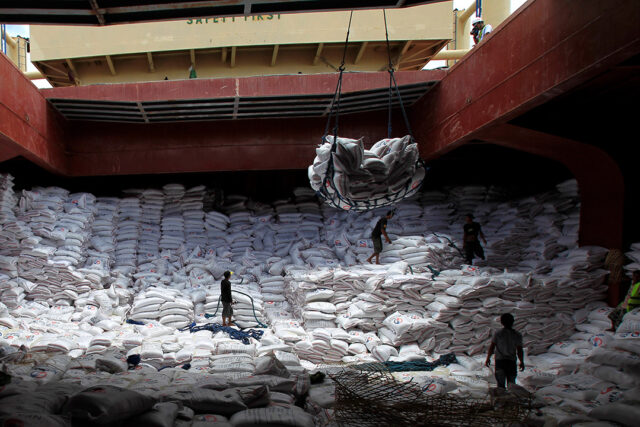In our earlier article, “Removal of the 5-Year Validity of Receipts and Invoices,” I explained that the Philippine tax system is mostly driven by supporting documents and that the deductibility of allowable expenses and claiming of input value-added tax (VAT) rely heavily on valid invoices. With the implementation of the Ease of Paying Taxes (EoPT) Act, changes are now in effect in the way taxpayers provide proof for their sales and purchases.
One of the many changes under the EoPT Act is that the invoice takes the place of the official receipt as the primary document to evidence the sale of services. An invoice shall now be the primary supporting document for both sales of goods and services. Taxpayers, especially service providers, should adapt to these changes.
The Bureau of Internal Revenue (BIR), through Revenue Regulations (RR) No. 7-2024, which took effect on April 27, laid down the new rules of invoicing brought about by the EoPT Act.
VALIDITY OF MANUAL AND LOOSE-LEAF OFFICIAL RECEIPTS
Taxpayers, especially service providers, can no longer issue manual or loose-leaf official receipts to support their sales of services upon the effectivity of RR No. 7-2024. Issuance of official receipts for the sale of services starting April 27 will not be considered evidence of sales of services; taxpayers who issued the same as the primary supporting document will be penalized.
Now what shall be done with the existing official receipts? Taxpayers have two options in this case.
The first option is to use the existing official receipts as a supplementary document that will be issued to customers upon the collection of the sale of services. Taxpayers opting for this should, however, stamp the words “THIS DOCUMENT IS NOT VALID FOR CLAIMING OF INPUT TAX” on the face of the OR. This is proof that taxpayers cannot and should not use an official receipt as the primary supporting document for claiming input VAT on purchases of services.
Alternatively, taxpayers may convert the remaining official receipts to Invoices. If this option is chosen, taxpayers should strike through the word “Official Receipt” on the face of the printed receipt and stamp the words “Invoice,” “Cash invoice,” “Charge invoice,” “Credit invoice,” “Billing invoice,” “Service invoice,” or any name describing the transaction, so long as the word “Invoice” is indicated. Converted official receipts are valid for claiming input VAT until Dec. 31, 2024, and thereafter may be used only as supplementary documents. The conversion of official receipts to invoices does not require approval from the BIR, but taxpayers doing this should submit an inventory of unused official receipts, indicating the number of booklets and corresponding serial numbers, within thirty (30) days from the effectivity of RR No. 7-2024, or until May 27, 2024.
VALIDITY OF ORS ISSUED BY CASH REGISTER MACHINES (CRMS), POINT-OF-SALE (POS) MACHINES, AND E-RECEIPTING OR ELECTRONIC INVOICING SOFTWARE
Like taxpayers issuing manual official receipts, those taxpayers using CRMs, PoS machines, and e-receipting/electronic invoicing software may also change the word “Official Receipt” to any name describing the transaction, so long as the word “Invoice” is indicated. This reconfiguration is only considered a minor system enhancement; hence, taxpayers need not notify the BIR and they do not need to reaccredit their sales software or system or reapply for a new Permit to Use (PTU). However, the serial number of the renamed invoice should just continue the last series of the previously approved official receipt; hence, taxpayers should notify the BIR office which has jurisdiction over the place where machines are used, indicating the starting serial number of the converted invoice.
Since the reconfiguration of the software is considered a minor system enhancement, the BIR only gave taxpayers employing CRM, PoS machines, and e-receipting/electronic invoicing software until the effectivity of RR No. 7-2024 to comply with the changes. Hence, if you now purchase from a seller that uses CRM, PoS machines, or e-receipting/electronic invoicing, make sure that you are issued an “invoice,” otherwise you cannot claim the input VAT on your purchase of services.
VALIDITY OF ORS ISSUED BY COMPUTERIZED ACCOUNTING SYSTEMS (CAS)
The system reconfiguration of CAS, or computerized books of account (CBA), unlike CRM, PoS, and e-receipting/electronic invoicing software, is considered a major system enhancement. The reconfiguration will affect not just the invoicing system but the whole timing of reporting of output VAT on sale of services; hence, there is a need to surrender the previously issued acknowledgement certificate (AC) or PTU, which will require the taxpayers to apply for a new AC. The required annex of the AC should indicate all branches (if applicable) that are using the system and the sets of series of invoices to be used by each of the branches.
Since the reconfiguration is regarded as a major system enhancement, the BIR gave taxpayers until June 30, 2024, to effect these system enhancements. As early as now, the taxpayers should start reconfiguring their CAS/CBA to reflect the changes in the timing of reporting revenue — upon rendition of services and not upon collection — especially for service-oriented taxpayers. Taxpayers should be in the process of collating the necessary documentation required to secure a new AC. If the taxpayers find that the needed enhancements cannot be made by June 30, they can request an extension by seeking approval from the Regional Director or Assistant Commissioner for Large Taxpayers. Those taxpayers who obtain such approval have six months from the date of the effectivity of RR No. 7-2024, or until Oct. 27, 2024, to make the necessary enhancements.
INVOICES UNDER RR NO. 3-2024 TRANSITORY PROVISIONS
In all cases above, if the taxpayer collects on the services it rendered prior to the effectivity of the regulations, a corresponding invoice must be issued in order for the purchasers to validly claim the input VAT on their purchase of services.
DIFFERENCES IN THE TRANSITORY PROVISIONS OF THE EOPT ACT AND RR NO. 7-2024
The transitory provisions of the EoPT Act provided taxpayers with six months from the effectivity of the implementing rules and regulations (IRRs) or until Oct. 27, 2024, to comply with the changes particular to VAT and percentage taxes; this covers the invoicing requirements. This leaves lingering questions.
Did the issuance of RR No. 7-2024 shorten the period provided under the EoPT Act for taxpayers to comply with these changes in the VAT and percentage taxes? Should the manual/loose-leaf official receipts and those issued by CRM, PoS machines, and e-receipting/electronic invoicing software still be valid until six months from the effectivity of the IRR and not upon the effectivity of RR No. 7-2024? Should taxpayers using CAS/CBA be given more time to comply with the system enhancements required, not just until June 30, 2024?
I surely hope the BIR will release an issuance on the alignment of the transitory provisions of RR No. 7-2024 and the EoPT Act. I believe that our taxpayers are willing to comply with the provisions of the EoPT Act, but they need more time to effect these changes. I know and I believe that the BIR is one of the supporters of the Ease of Doing Business Act, and alignment is truly in line with easing the taxpayers’ transition to the new law.
Overall, RR No. 7-2024, among others, sheds light on the taxpayers’ questions about the major changes brought about by the EoPT Act, albeit with hanging questions still. Valid supporting documents really play a pivotal role in the Philippine tax system. With the implementation of the EoPT Act, taxpayers substantiate their sales and purchases a little differently. As we navigate these changes, it becomes imperative for taxpayers to adapt swiftly and ensure compliance with the evolving regulations to avoid paying unnecessary penalties.
Let’s Talk Tax is a weekly newspaper column of P&A Grant Thornton that aims to keep the public informed of various developments in taxation. This article is not intended to be a substitute for competent professional advice.
Runell Alvyn V. Sarmiento is a senior in charge from the Tax Advisory & Compliance division of P&A Grant Thornton, the Philippine member firm of Grant Thornton International Ltd.
pagrantthornton@ph.gt.com












